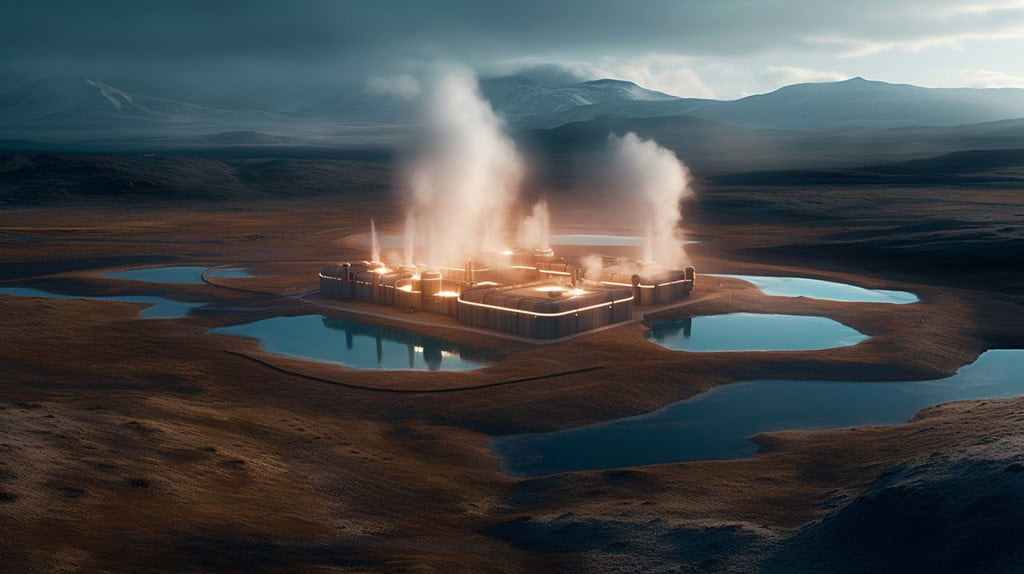
Geothermal energy emerges as a promising alternative in today’s energy landscape. What exactly is geothermal energy and how does it work? Dive deep into this renewable resource with E-Recycling, examining its advantages and disadvantages to understand its impact on our environment and daily lives.
Geothermal energy originates from heat stored beneath the Earth’s surface. This heat comes from the Earth’s hot core and is gradually released through the ground. Geothermal technology harnesses this heat to generate electricity and provide heating and cooling.
The operation of geothermal energy involves extracting heat stored underground. This process entails drilling deep wells into the ground to access geothermal heat. Then, the heat is used to heat a fluid, usually water or steam, which drives a turbine connected to an electric generator.
In residential and commercial settings, geothermal systems use geothermal heat pumps to tap into the heat from the ground for heating in winter and cooling in summer. These systems circulate a refrigerant through a loop of pipes buried in the ground to absorb or release heat as needed.
One of the main advantages of geothermal energy is its sustainability. Unlike fossil fuels, geothermal heat is a renewable energy source that never runs out. Additionally, geothermal energy produces considerably lower greenhouse gas emissions compared to fossil fuels, helping to mitigate climate change.
Another significant advantage is the long-term cost stability. Although the initial installation of geothermal systems may be costly, operational costs are considerably lower than conventional systems in the long run. This is because geothermal energy does not rely on external supplies such as gas or oil, making users less susceptible to price fluctuations.
Despite its numerous advantages, geothermal energy also presents some disadvantages. One of the main challenges is limited geographical location. Not all areas are suitable for geothermal energy, as certain geological conditions are required for viability. This limits its applicability in some regions.
Another disadvantage is the high initial installation cost. Drilling geothermal wells and installing systems can be expensive, which may deter some consumers or investors. However, it is important to note that these costs can be recouped over time due to lower operational costs.
In summary, geothermal energy is a promising energy source with the potential to significantly contribute to the transition towards a cleaner and more sustainable economy. While it presents challenges such as limited geographical location and high initial costs, its numerous advantages, such as sustainability and long-term cost stability, make it an attractive option for the future of energy.
At E-Recycling, we are committed to the development and promotion of sustainable technologies like geothermal energy. Visit our website to discover more about our solutions for recycling WEEE and ferrous and non-ferrous waste, contributing to a greener and more prosperous future.